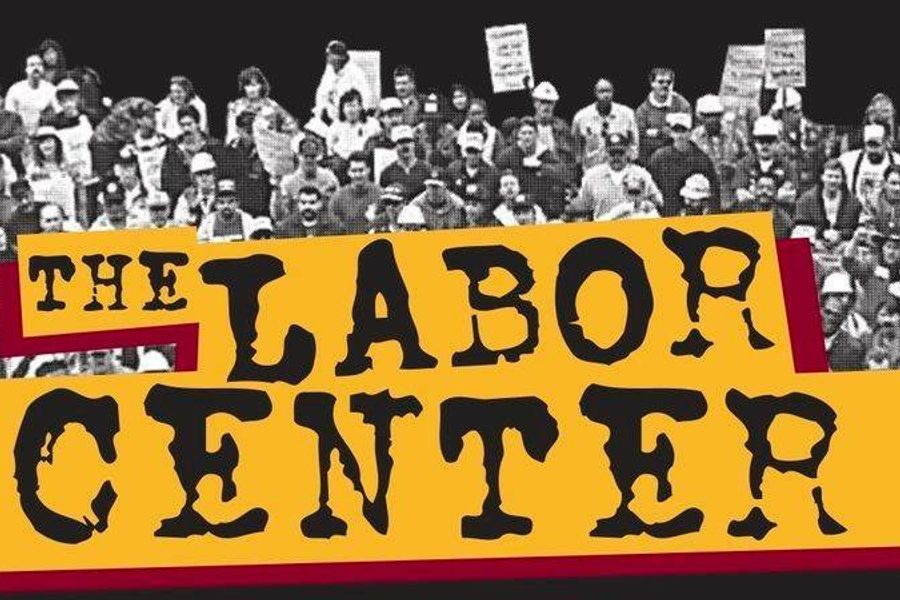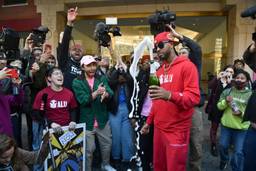
The Labor Center at the University of Massachusetts (UMass) at Amherst is in turmoil. Its director, Eve Weinbaum, says she was abruptly pushed out of the position. In an alarming e-mail to alumni, students and allies, she protested funding cuts to teaching assistants and part-time instructors and, more troublingly, threats to the “Labor Studies faculty’s autonomy to make programmatic decisions and to designate a Director.”
Founded in 1964, the Labor Center is one of about 30 labor centers around the country. Most are rooted in the extension programs of land grant public universities. In addition to its extension work — providing trainings for unions and worker centers — the Labor Center runs undergraduate and graduate degree programs in labor studies.
These days it is most renowned for its limited residency Union Leadership and Administration (ULA) program, in which union leaders, staff and rank-and-file activists meet for intense 10-day periods of instruction every summer and winter and can earn a graduate degree in three years if they keep up with readings and assignments from home (or in the field). As you might have guessed, I’m a proud alum of the program.
The response to Weinbaum’s letter produced nearly 500 letters of protest in a few days, according to organizers for a Save the Labor Center campaign. Local union leaders, heads of other labor centers, alumni and current students also expressed alarm about the situation in a prominent article in The Boston Globe. According to Jeff Schuhrke, another UMass alum and writer for In These Times, an organizing committee of at least 30 alumni is holding regular conference calls to plan the next steps of the campaign. The upheaval there has many worried about the future of labor education at public universities nationwide. Changes in the way education programs are funded are setting off a kind of labor center “Hunger Games,” where some programs grow while others die.
Austerity and the corporatization of higher education
The plight of the Labor Center is rooted in a very common problem: state divestment in public higher education. Public university systems that were once so adequately funded that they charged little-to-no in-state tuition to students have seen their state funding decline over a period of decades.
For a state as wealthy and as liberal as its reputation, Massachusetts’ divestment in its university system is particularly egregious. The state allocates some $508 million to UMass. That’s only 17 percent of the school’s $3 billion budget. And the legislature only increased state funding by 1 percent this June, which will lead to more increases in tuition and student fees.
The skyrocketing tuition and crippling student debt caused by this divestment have been well documented. What is a bit murkier is how it impacts the function of a university, as every academic discipline is forced to generate revenue. This is what critics refer to as the corporatization of higher education.
Science and engineering faculty must secure federal grants, philanthropic funding, corporate contracts and Congressional earmarks in order to gain tenure and get promoted. Those revenue sources fund an army of non-tenured research assistants, postdocs and research professors.
Law and business schools can turn to corporations and wealthy alumni for donations and endowed chairs to fund additional faculty lines. But the humanities and social sciences don’t have the same rich resources to draw upon. Their charge from administration is to drum up student enrollment, particularly for profitable master’s degree programs — hence, the pressure on the Labor Center to recruit more out-of-state students for its residential master’s program.
Labor centers are changing with the times
But not every labor center is struggling. Some, like the ones at Rutgers University and Cornell University, have deftly pursued program grants from unions and philanthropic organizations, allowing them to expand and create new institutes. Cornell’s Worker Institute is partnered with the AFL-CIO on a next generation leadership development program and convenes a workers research network, among other projects. Rutgers’ Center for Innovation in Worker Organization does leadership development work for alt-labor groups and is a key partner in Bargaining for the Common Good, among its other programs.
Bucking the state-funding trend, the City University of New York’s Joseph S. Murphy Institute for Worker Education and Labor Studies has, according to its director, Gregory Mantsios, “received a commitment from the University to elevate the status of the Institute to a CUNY School of Labor and Urban Studies.” With this come more state funding and control over that money. It is the result, according to Murphy professor Stephanie Luce, of a sustained lobbying campaign by local labor leaders that labor should have a school with the same status as CUNY’s business school.
“It reflects that New York City, and the state, and CUNY have decided to invest in the labor school,” she said.
Luce, a former UMass labor professor, recently issued a report that showed that New York City has defied national trends and seen its union density increase to 25.5 percent. The NYC labor movement has both the power and the willingness to exercise it on behalf of labor education.
Another labor center that’s bucking the trend is the Kalmanovitz Initiative for Labor and the Working Poor at Georgetown University. A private Jesuit university, Georgetown didn’t even have a labor center until a few years ago. They had just two labor history professors, Michael Kazin and Joseph McCartin.
Georgetown president John DeGioia sought to create a labor center at the university in 2006. He was eventually connected to the Kalmanovitz Charitable Foundation (which, ironically, was carved out of the estate whose caretakers left a deep scar in the city of Milwaukee by shuttering the unionized Pabst brewery in the mid-1990s). An influential board member, who was steeped in the Catholic social justice tradition and whose children had attended Georgetown, wanted to steer a significant grant to a labor education program in the Washington, D.C. area.
McCartin agreed to head up the new labor center, bringing the influential labor strategist Stephen Lerner along as a fellow. The modestly-funded initiative (its annual budget rarely tops $700,000) served as the incubator for Bargaining for the Common Good — a union coalition effort that aligns bargaining demands with those of other members and with community demands around progressive taxation, affordable housing, youth incarceration and government transparency.
But, if you’re wondering why Kalmanovitz is an “initiative” and not an “institute,” the charitable organization provides rolling grants — not a bequest or an annuity — which leaves the Kalmanovitz Initiative as vulnerable to the fickle priorities of a charity as the public labor centers are to the indifference of state legislators.
The future of labor education at UMass and beyond
John A. Hird, dean of social and behavioral sciences at UMass, assures In These Times, “We have no intention of allowing the ULA program to stand on its own.”
He says the university is working with the Labor Center to increase residential enrollment in both the undergraduate and graduate programs, which have declined in recent years. He sees some promise in the planned “4+1” bachelor’s/master’s program for increasing labor studies enrollment. The program would allow undergraduate students to earn graduate credit in their junior and senior years and walk away with both a bachelor’s and a master’s degree in just five years.
“Rest assured we are doing everything we can to further develop this jewel of a program,” Hird said about ULA.
While UMass is earnestly conducting a search for a new director of the Labor Center, Hird concedes that it is likely the position will go to an internal candidate, and not a new hire, due to the financial picture. Sources at the Labor Center say they hope their campaign might result in a commitment to hire a new tenure-track labor professor to direct the center, or, at a minimum, to win more input for Labor Center faculty and staff in the selection of its next director.
“This crisis is going to bring more attention to UMass and more of a commitment to fund it,” said Paul Mark, a Democratic state representative.
Mark was a shop steward and executive board member of his IBEW local when he was a classmate of mine at ULA. He notes that Massachusetts’ senate president is also an alum of UMass, and that the Democratic legislature is moving a plan to institute a graduated income tax in order to better fund education and transportation. You read that right, the state that Republicans love to malign as “Taxachusetts” has a constitutional flat tax. It will take two successive legislative sessions to vote on a progressive tax amendment before the matter can be put before the voters in 2018.
Mark also reports that he has sat in on strategy meetings this past weekend with Tom Juravich, who is serving as interim director of the Labor Center, and state AFL-CIO president Steven Tolman, among others, to brainstorm ways to direct more union funding and programming to the center. If the current crisis gets Massachusetts’ unions to realize that they cannot take for granted that the Labor Center will always be there, well, that is certainly a silver lining. Although, even this may not be enough. As the Kalmanovitz Initiative’s McCartin laments, “Even if you’re taking care of your labor constituents well, they don’t have the resources they once did to keep you funded.”
Many people I talked to note that the Boston area is thick with private colleges, including elite institutions like Harvard University and the Massachusetts Institute of Technology. Their many graduates have moved on to careers in politics. As a result, UMass doesn’t command quite the same alumni loyalty among legislators that many other state universities do. The other intrinsic challenge for UMass that supporters will note is its physical remoteness. Most of Massachusetts’ labor movement is based in Boston, in the eastern end of the state. The beautiful flagship UMass campus is located “in the sleepy west of the woody east” of Amherst.
I happen to think that remoteness is an asset.
Most of the surviving labor centers sprang up after World War II. They were founded in the spirit of labor-management partnership, a post-war consensus that emphasized mediation, arbitration and respectable political statesmanship. This is a framework that most employers abandoned long ago. But, to this day, most unions approach the labor centers as places for shop stewards and staff representatives to learn how to handle grievances or the finer points of collective bargaining.
What our movement needs from our labor centers is to be a place where leaders, staff and rank-and-file activists, from all kinds of different unions, can get the hell away from their offices and daily grievances and meet together in a retreat-like setting and study, read, discuss and debate — and maybe come up with some potential breakthrough strategies.
A model worth revisiting is the labor colleges of the 1920s. Brookwood Labor College in upstate New York was a bucolic retreat where thoughtful activists studied and debated the big strategic questions of the day. These included how to adapt craft union structure to mass industrial production and organize key sectors of the economy.
Brookwood made a substantial, if underappreciated, contribution to the strike wave that revived labor’s fortunes in the late 1930s. Our current economic order is marked by massive inequality that some call the New Gilded Age, and our current union structures are as ill matched as those were in the 1920s to the ways industry restructured to avoid our reach. Looking backwards to that time makes sense.
We need more spaces like the UMass Labor Center to regroup and reconsider our strategic choices, not fewer. Labor centers are worth fighting for.
Shaun Richman is a labor expert at SUNY Empire State University and author of Tell The Bosses We’re Coming: A New Action Plan for Workers in the 21st Century.








